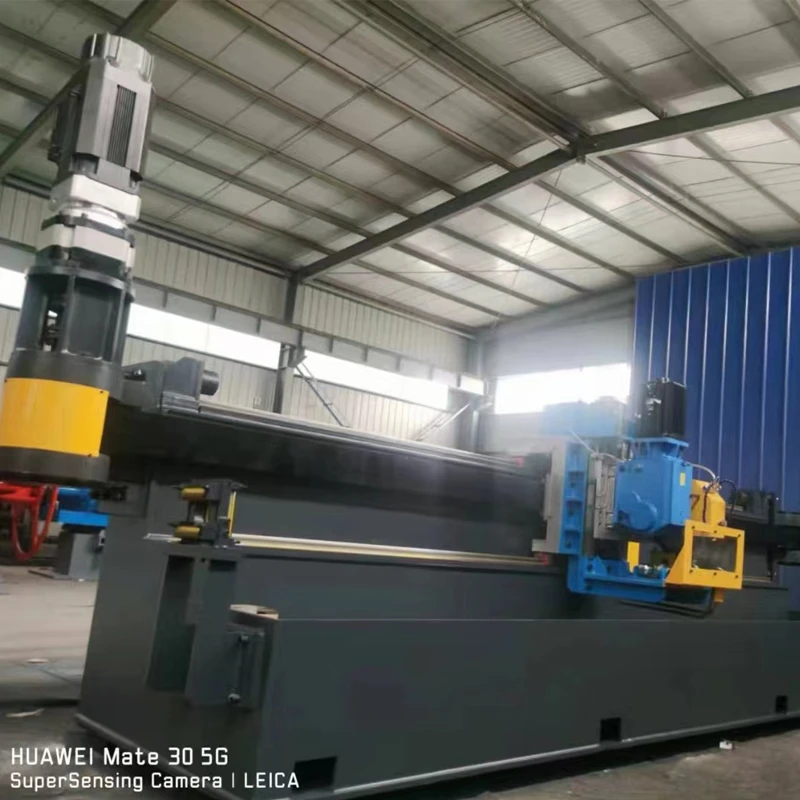Steel Straightening Machine for Precision Metal Forming and Manufacturing Processes
Understanding the Steel Straightener Machine An Essential Tool for Metal Fabrication
In the world of metal fabrication, precision and quality are paramount. Among the myriad of tools and machines employed in this industry, the steel straightener machine stands out as a vital apparatus that ensures the integrity and conformity of steel materials. This device provides a solution to the common problem of warping and bending that can occur during the manufacturing and processing of steel, which can impact both aesthetic and functional qualities. This article explores the significance, functionality, and benefits of the steel straightener machine.
What is a Steel Straightener Machine?
A steel straightener machine is a specialized piece of equipment designed to straighten out steel sheets, plates, bars, and other forms of metal that may have been compromised during processing. These machines are capable of correcting misalignment and removing any curvature or distortion, typically caused by welding, rolling, or cutting processes. The straightening process is essential for ensuring that metals can be efficiently used in subsequent operations, such as machining, welding, and assembly.
How Does a Steel Straightener Machine Work?
The operation of a steel straightener machine involves several key components that work in unison to achieve the desired results. At its core, the machine comprises a pair of rollers or plates that apply pressure to the metal piece being straightened. The process typically follows these steps
1. Loading the Material The steel component is positioned between the rollers. 2. Adjusting Roller Pressure The operator adjusts the pressure of the rollers based on the thickness and type of steel being treated.
3. Straightening Process As the machine operates, the steel passes through the rollers, which exert a controlled force to correct any bends or twists.
steel straightener machine

This mechanical approach allows for high efficiency and consistency, making the straightener machine an indispensable tool in metalworking industries.
Benefits of Using a Steel Straightener Machine
1. Enhanced Precision One of the main advantages of using a steel straightener machine is the precision it offers. Accurately straightened steel ensures better fitting and alignment during assembly, leading to higher quality products.
2. Increased Productivity By automating the straightening process, these machines significantly reduce manual labor and time, enhancing overall productivity. Workers can focus on other critical tasks, knowing that the steel straightening process is handled efficiently.
3. Reduction of Waste Straightening steel before it is cut or processed further minimizes material waste. This efficiency not only saves costs but also contributes to more sustainable practices in manufacturing.
4. Versatility Steel straightener machines can be designed to accommodate a range of steel types and dimensions, making them adaptable to various projects and industries. This flexibility is crucial for businesses that handle different materials and specifications.
5. Improved Safety By mechanizing the straightening process, there is less risk of injury associated with manual handling of heavy metal pieces. Modern machines often come with safety features that protect operators and ensure safe operation.
Conclusion
In conclusion, the steel straightener machine is a cornerstone of modern metal fabrication, enhancing both the quality and efficiency of steel processing. As industries continue to advance, the importance of precision in metalwork cannot be overstated. By employing advanced technology such as steel straightener machines, manufacturers can achieve superior results, reduce waste, and improve safety in the workplace. As the demand for high-quality metal products grows, investing in reliable steel straightening equipment will be crucial in maintaining a competitive edge in the market. Whether you're in construction, automotive, or any other sector that relies on steel, understanding and utilizing steel straightener machines can significantly impact your production processes and final output.
-
High Frequency Straight Seam Welded Pipe Production Line-BzZhou Xinghua Machinery Equipment Manufacturing Co., LTD.|line pipe steel&welded gas pipeNewsJul.30,2025
-
High Frequency Straight Seam Welded Pipe Production Line-BzZhou Xinghua Machinery Equipment Manufacturing Co., LTD.|High Precision&Automated SolutionsNewsJul.30,2025
-
High Frequency Straight Seam Welded Pipe Production Line - BzZhou Xinghua Machinery Equipment Manufacturing Co., Ltd.NewsJul.30,2025
-
High Frequency Straight Seam Welded Pipe Production Line-BzZhou Xinghua Machinery Equipment Manufacturing Co., LTD.|Precision Welding, High EfficiencyNewsJul.30,2025
-
High Frequency Straight Seam Welded Pipe Production Line|BzZhou Xinghua|Precision Welding&EfficiencyNewsJul.30,2025
-
High Frequency Straight Seam Welded Pipe Production Line - BzZhou Xinghua|Precision Engineering&EfficiencyNewsJul.30,2025


